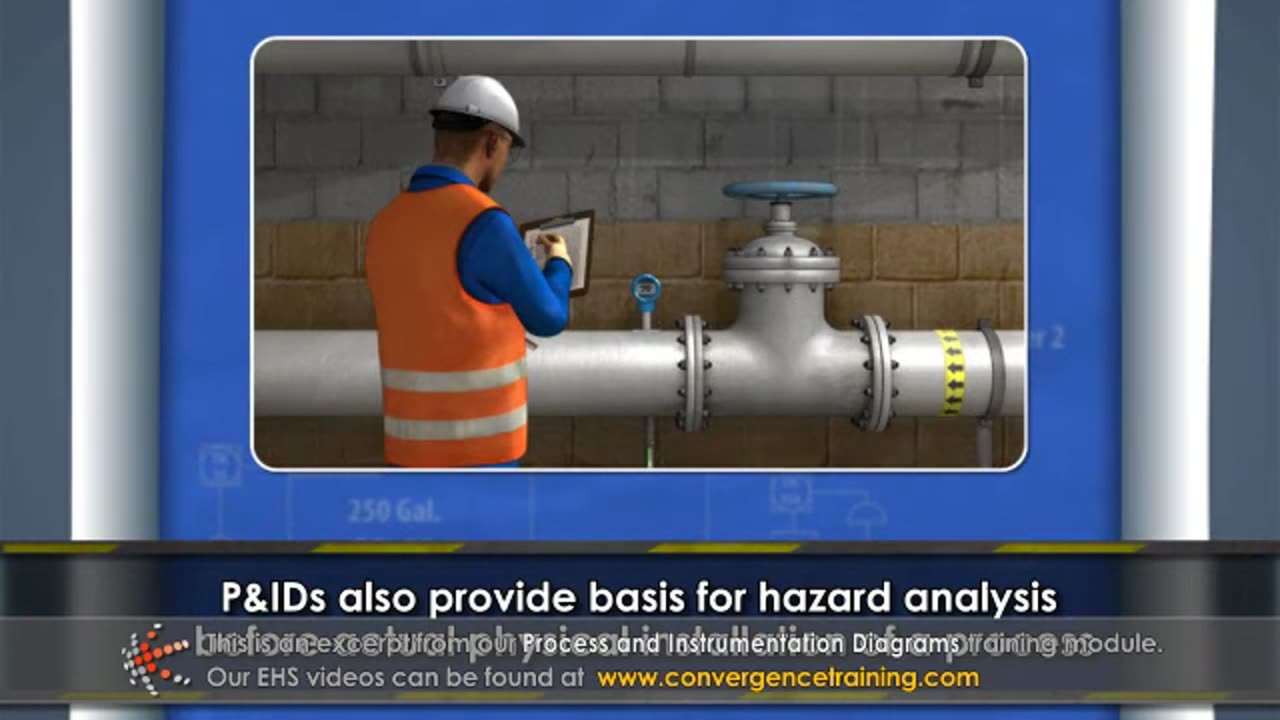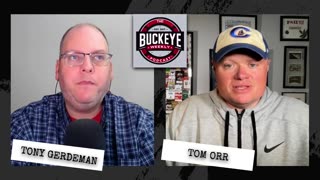Premium Only Content

Process and Instrumentation Diagrams
### **Process and Instrumentation Diagrams (P&IDs): An Overview**
A **Process and Instrumentation Diagram (P&ID)** is a detailed schematic representation of a process system, showing the relationships between equipment, pipelines, instrumentation, and control devices. It is a critical tool in engineering, design, and operations for industries like chemical, oil and gas, pharmaceuticals, and power generation.
---
### **Purpose of P&IDs**
1. **System Design**:
- Provides engineers with a comprehensive visual of the process flow.
- Helps in designing and troubleshooting the system.
2. **Operation and Maintenance**:
- Guides operators in understanding system functionality.
- Identifies equipment and instrumentation locations for maintenance.
3. **Safety and Compliance**:
- Identifies potential hazards and ensures proper safety measures.
- Ensures compliance with regulatory standards.
4. **Project Management**:
- Acts as a reference during construction and commissioning phases.
---
### **Key Components of a P&ID**
A P&ID includes a combination of symbols, labels, and lines to represent the following components:
#### **1. Process Equipment**
- **Pumps**: Centrifugal, positive displacement.
- **Compressors**: Reciprocating, screw, or centrifugal.
- **Heat Exchangers**: Shell and tube, plate, or air-cooled.
- **Reactors**: Chemical reactors or furnaces.
- **Tanks and Vessels**: Storage tanks, process vessels.
#### **2. Pipelines**
- Represented as lines with labels indicating pipe size, material, and flow direction.
- May include markers for insulation or heating.
#### **3. Instrumentation**
- **Sensors**: Temperature, pressure, flow, level, etc.
- **Transmitters**: Devices that send signals to a control system.
- **Controllers**: PID controllers for automated regulation.
- **Valves**: Control, safety relief, check, etc.
#### **4. Control Systems**
- **DCS (Distributed Control Systems)**: Centralized control panels.
- **SCADA (Supervisory Control and Data Acquisition)**: Remote monitoring systems.
#### **5. Utility Systems**
- Includes cooling water, steam, compressed air, and fuel systems.
---
### **Symbols and Notations**
P&IDs rely on standard symbols defined by international standards such as:
- **ISA 5.1 (Instrumentation Symbols and Identification)**.
- **ISO 10628 (Diagrams for Chemical and Petrochemical Industry)**.
#### Common Symbols:
- **Equipment**: Rectangles for tanks, circles for pumps, etc.
- **Instruments**: Circles with tags (e.g., PT for Pressure Transmitter).
- **Valves**: Specific shapes for control, check, and safety valves.
- **Lines**:
- Solid Line: Process flow.
- Dashed Line: Instrument signals.
- Double Line: Major process streams.
---
### **P&ID Example: Key Representation**
**Scenario**: A water pump system with flow and pressure monitoring.
1. **Pump (P)**: Represented by a circle with the tag "P-101."
2. **Piping**: Solid line indicating the flow from the pump to a storage tank.
3. **Flow Sensor (FT)**: Circle with "FT-101" indicating flow measurement.
4. **Pressure Transmitter (PT)**: Circle with "PT-101" indicating pressure monitoring.
5. **Control Valve (CV)**: Symbol indicating an automated valve for regulating flow.
---
### **How to Read a P&ID**
1. **Start with the Legend**: Understand the symbols and notations specific to the P&ID.
2. **Follow the Flow**: Trace pipelines from the source (e.g., pump) to the destination (e.g., tank).
3. **Identify Equipment**: Locate pumps, valves, and instruments using the tags provided.
4. **Analyze Control Systems**: Identify how sensors and controllers interact with equipment.
---
### **Applications of P&IDs**
1. **Process Design**:
- Used during the design phase to outline system operations.
2. **Hazard Analysis**:
- Identifies critical areas for safety and environmental risks.
3. **Maintenance**:
- Helps technicians locate components for repairs or inspections.
4. **Training**:
- Used to train operators on process understanding and control.
---
### **Tips for Creating or Using P&IDs**
1. **Use Standard Symbols**: Ensure symbols conform to industry standards.
2. **Keep It Updated**: Reflect changes in the process or equipment.
3. **Label Clearly**: Avoid ambiguous or missing tags.
4. **Simplify Where Possible**: Avoid unnecessary details that clutter the diagram.
5. **Validate Accuracy**: Verify with operators and engineers during design or updates.
---
If you need help with interpreting or designing a specific P&ID, let me know! I can guide you further. 😊
-
 6:43
6:43
HSESafetyInformation
6 months agoLahori Chanay Recipe - Lahori Cholay Recipe - Chana Chana Masala
55 -
 40:44
40:44
Ohio State Football and Recruiting at Buckeye Huddle
5 hours agoOhio State Football: 10 Things We Learned From Rewatching the Texas Win
3.77K -
 LIVE
LIVE
Edge of Wonder
7 hours agoRemote Viewing 3I/ATLAS & Yellowstone’s Weird Anomalies
274 watching -
 1:08:47
1:08:47
TheCrucible
4 hours agoThe Extravaganza! EP: 30
78.2K8 -
 1:16:58
1:16:58
Kim Iversen
9 hours agoCOVID VACCINE HORROR: Fertility Destroyed & DNA Altered? | Nicolas Hulscher, MPH
44.1K96 -
 1:58:54
1:58:54
Wayne Allyn Root | WAR Zone
7 hours agoWAR Zone LIVE | 2 SEPTEMBER 2025
14.5K1 -
 1:01:05
1:01:05
Jeff Ahern
4 days ago $2.32 earnedFriday Freak out with Jeff Ahern
29K8 -
 1:51:40
1:51:40
Redacted News
4 hours agoHIGH ALERT! TRUMP IS COMING FOR CHICAGO, U.S. TROOPS PREPARING INVASION TO STOP MURDERS | REDACTED
126K218 -
 2:10:45
2:10:45
Red Pill News
6 hours agoJustice Is Long Dead in The DC Circuit on Red Pill News Live
47.9K14 -
 1:17:50
1:17:50
Awaken With JP
7 hours agoTrans Shooter is the Victim, Vaccines in Trouble, and Greta is Ugly - LIES Ep 106
74.4K29